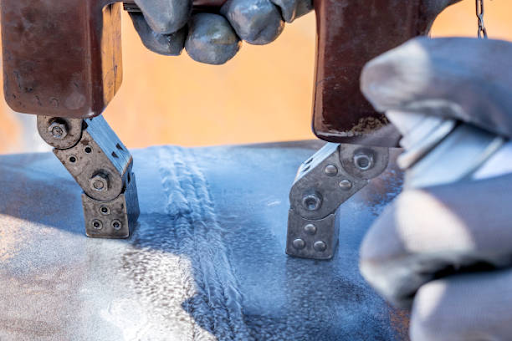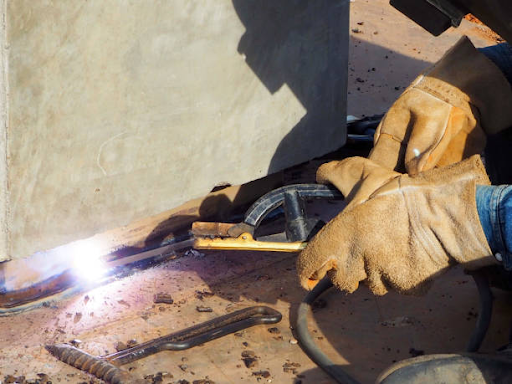Table of Content
- Understanding Weld and Corrosion Inspection
- Challenges in Traditional Inspection Methods
- Types of Weld Testing Methods
- Future Trends in Inspection Workflows
- Conclusion
In the fast-paced world of industrial maintenance, ensuring the integrity of welded joints and preventing corrosion is critical. Weld and corrosion inspection workflows are not just about saving time and money; they’re a bout maintaining safety, compliance, and operational reliability. This significantly enhances these inspection processes, making weld inspection workflows more efficient and reliable.
Understanding Weld and Corrosion Inspection

Weld and Corrosion Inspection is essential for identifying potential issues before they become costly problems. By implementing advanced inspection techniques and utilizing the latest technology, companies can stay ahead of corrosion issues and ensure the longevity of their machines.
What is Weld Inspection?
Weld Inspection is a process used to ensure that welded joints meet specified standards and are free from defects that could lead to failure. This involves various techniques to examine the quality and integrity of welds in structures, pipelines, and machinery.
What is Corrosion Inspection?
Corrosion inspection focuses on identifying and assessing the extent of material degradation due to environmental exposure. This type of inspection is crucial for maintaining the longevity and safety of metal structures and components. The corrosion inspection workflow involves the use of various methods, such as visual inspection, ultrasonic testing, and Magnetic Particle Testing, to detect corrosion and prevent further damage. Regular corrosion inspections are essential in industries such as oil and gas, marine, and construction to prevent costly repairs and ensure structural integrity.
Why are these Inspections Crucial?
Both weld and corrosion inspections are vital for preventing catastrophic failures, ensuring structural integrity, and extending the lifespan of industrial assets. Regular inspections help detect early signs of damage, allowing for timely maintenance and repairs.
Challenges in Traditional Inspection Methods

Challenges in traditional inspection methods include limited access to certain areas, difficulty in detecting hidden corrosion, and time-consuming manual processes. As technology advances, new Non-Destructive Testing Methods, such as ultrasound and electromagnetic testing, are being developed to overcome these challenges and improve the accuracy and efficiency of inspections.
1. Time-Consuming Processes
Traditional inspection methods are often labor-intensive and time-consuming. Manual inspections can take hours or even days, depending on the complexity and accessibility of the area being inspected.
2. Human Error and Subjectivity
Manual inspections are prone to human error and subjectivity. Different inspectors might interpret the same data differently, leading to inconsistent results and potential oversight of critical issues.
3. Equipment and Accessibility Issues
Inspecting certain areas, especially in large industrial plants or remote locations, can be challenging. The necessary equipment might be cumbersome, and some spots may be hard to reach without specialized tools or significant safety risks.
You can overcome these challenges with solutions from NDT Products. With a commitment to innovation and customer satisfaction, NDT Products stands at the forefront of the NDT industry, offering not just products, but the best solutions tailored to meet the unique requirements of each client. Trust NDT Products for all your non-destructive testing needs and experience unparalleled performance, durability, and peace of mind with every inspection.
Types of Weld Testing Methods
Weld testing methods can be broadly categorized into two types: destructive testing and non-destructive testing. Each has its own set of techniques and applications, making them suitable for different situations and requirements. Non-destructive testing, as the name suggests, involves examining the weld without causing any damage. This method is preferred for critical applications where the integrity of the entire structure must be preserved.
1. Visual Inspection
Visual inspection is the simplest form of NDT, involving a thorough examination of the weld surface for defects like cracks, porosity, or undercuts.
Revolutionize Inspections with Mentor Visual iQ+ HD VideoProbe and experience unparalleled precision with AI-driven insights and cloud-based tools.
2. Radiographic Testing
Radiographic testing uses X-rays or gamma rays to create images of the internal structure of a weld. This method can detect internal flaws that are not visible to the naked eye.
Elevate your material analysis with the X-MET8000 Hand-Held XRF Analyzer, versatile, portable, and built for tough environments. Analyze metals, soils, plastics, and more with non-destructive precision in seconds. Ready to use anywhere, it offers unmatched reliability and instant data sharing for optimum productivity and efficiency.
3. Ultrasonic Testing
Ultrasonic testing employs high-frequency sound waves to detect internal flaws in the weld. It is highly effective for finding cracks, voids, and other defects.
Experience unmatched precision with the NewSonic SonoDur3 Portable Hardness Tester. Leveraging UCI (Ultrasonic Contact Impedance) technology, SonoDur3 sets the standard for innovative and reliable hardness testing. Trust NewSonic’s expertise for superior performance in every application.
4. Magnetic Particle Testing
Magnetic particle testing involves applying a magnetic field to the weld and sprinkling ferromagnetic particles over it. These particles gather around any defects, making them visible under a black light.
Enhance your NDT capabilities with REL, Inc. UV Lighting and Accessories, now available through NDT Products across Canada. Designed to meet the stringent power and intensity requirements of Fluorescent Penetrant Inspection (FPI) and Magnetic Particle Inspection (MPI) in aerospace, automotive, defense, energy, and medical industries, REL inspection lamps deliver unmatched reliability and performance.
5. Liquid Penetrant Testing
Liquid penetrant testing uses a dye to highlight surface-breaking defects. The dye is applied to the weld, and any excess is removed. A developer is then used to draw out the dye from the defects, making them visible.
The Splitter NDT LP1 Liquid Penetrant Inspection Station offers top-notch inspections tailored to your needs and budget, ensuring durability and usability.
6. Eddy Current Testing (ECT)
Eddy current testing uses electromagnetic fields to detect surface and near-surface defects in conductive materials. It’s particularly useful for inspecting welds in non-ferrous metals.
Learn how Eddy Current Testing can improve your inspection processes
Future of Weld and Corrosion Inspections
As these technologies advance, we can expect inspections to become even more efficient, accurate, and safe. The integration of AI, robotics, and advanced data analytics will drive the industry forward, setting new standards for quality and reliability.
With the use of drones and sensors, inspections can be conducted in hard-to-reach areas with minimal risk to human inspectors. Overall, the future of weld and corrosion inspections is poised to revolutionize the way we ensure safety and quality in various industries.
Robotic systems are increasingly being used to perform weld and corrosion inspections. These robots can access hard-to-reach areas, such as inside pipelines or high-up structural components, with precision and consistency.
Automated inspections reduce human error and ensure that every part of the structure is thoroughly examined. Robots can operate in hazardous environments, reducing the risk to human inspectors. For instance, in the oil and gas industry, robots can inspect offshore platforms or underwater pipelines, areas that are dangerous and difficult for humans to access.
Conclusion
Boosting efficiency in weld and corrosion inspection workflows is not just about embracing new technologies but also about fostering a culture of continuous improvement and learning. By leveraging modern tools and techniques, companies can ensure safer operations, reduce costs, and enhance the lifespan of their assets.